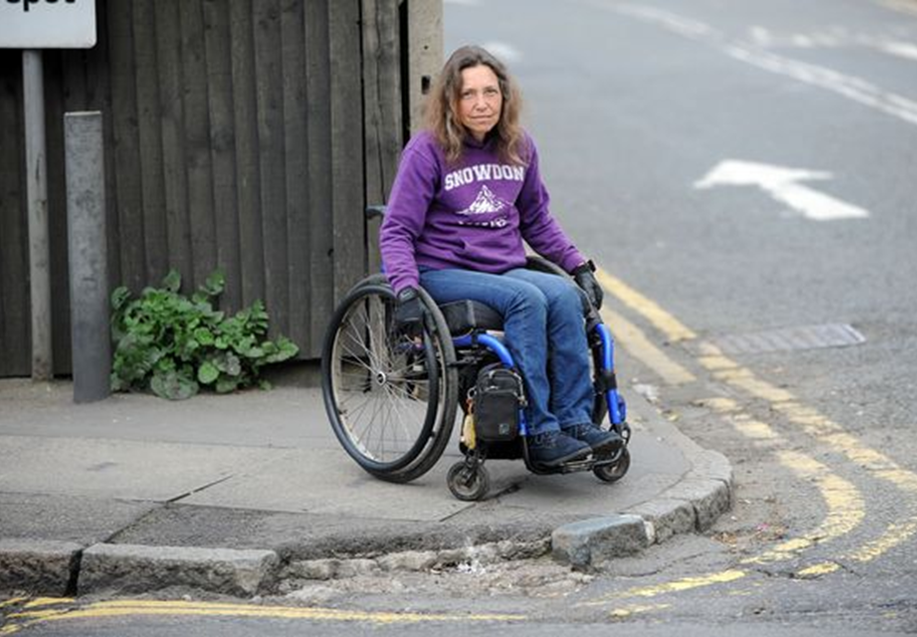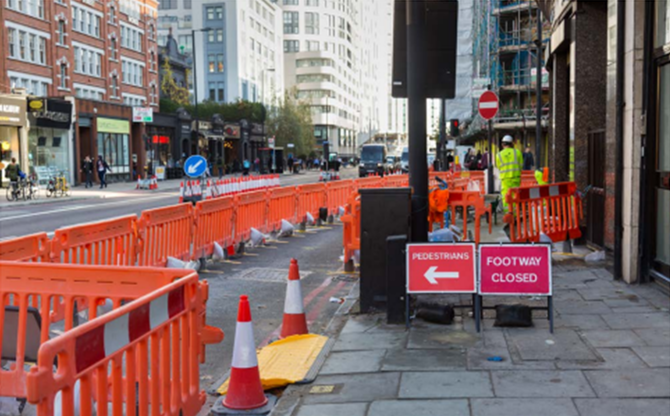This section is for operatives that are currently working on sites and what risks works will present to member of the public. Sites will always need to be adapted to meet the needs of those who need additional support, and this guide allows operatives to be more aware. This section should also be used alongside reinstatement activities where larger reinstatement vehicles and other operatives working with materials required to complete reinstatement. The “pass” over to reinstatement is key to a safe site and teams will need to make adjustments where required to facilitate all members of the public.
Our Safety Code states:
"You must consider the needs of children, older people and disabled people, with particular regard for visually impaired people", and you must provide: "a safe route suitable for people using wheelchairs, mobility scooters, prams or pushchairs".
Even small changes cause problems. If you are closing or have closed a footway as part of the works, then ensure the surface provided must be adequate for the safety of all road users.
For wheelchair users, this means we must help them to understand how we’ve changed the physical environment.
You must check that:
- Footway and carriageways are in a good state for walking and wheelchair users.
- Walkways are wide enough for wheelchair users and set up as per legislation to ensure safe passage.
- Ramps in use are stable, secure, with walkways wide enough to allow full swing for negotiating sites safely.
- Routes are explained and, if appropriate, customers are guided through the site.
- Diversions do not put the public in danger – do not divert through underpasses or dimly lit areas.
- Changes to access and impacts on transport (Bus Stops etc), are explained.
It’s likely navigating a site and road works will be a daunting task for wheelchair users. Where appropriate offer support and check that they are able to navigate the site safely. Do make a note of any concerns or issues when doing this to see if there is any way that site accessibility can be improved.
In some situations, such as emergency works carried out at short notice, it may be hard to cater for everyone’s needs.
Site operatives and supervisors can achieve a good setup by assessing location risks as set out in the Code of Practice for Safety at Street Works and Road Works.
This applies not only for the wheelchair users but also for people who are hard of hearing or are visually impaired.
Large or small, every piece of work has an impact. That’s especially true for people with disabilities. We want all of our street and highway works to be safe and compliant, and must assess every location, all of the time.
Ask yourself these questions:
- Have I made the site safe to work in and safe for the general public?
- Whichever way they approach these works, will people using this road or footway understand what is happening and what’s expected of them?
- Is there anything else I could do, to improve this situation?
Finally, in some situations – such as short notice emergency works – it may be hard to cater for everyone’s needs. But site operatives and supervisors must still assess location risks as set out in the Code of Practice for Safety at Street Works and Road Works.
This video is 15 minutes long. Please watch it, as it provides an excellent overview of how we can help all kinds of people in vulnerable situations with some memorable examples.
For further information see:
- https://app.hauc-uk.org.uk/documents_and_alerts/documents/17-2022-hauc_ramping_up.pdf
- https://content.tfl.gov.uk/bus-stop-design-guidance.pdf
- https://app.hauc-uk.org.uk/pedestrian-barriers
- https://tfl.gov.uk/cdn/static/cms/documents/safer-provisions-for-pedestrians-at-roadworks-a-risk-prioritisation-framework-final.pdf



